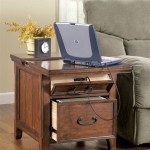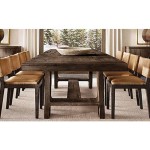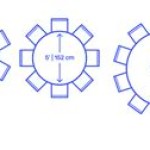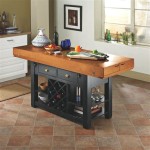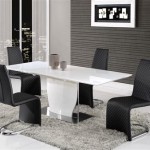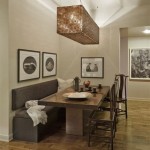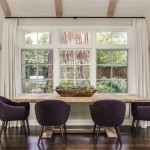36 By 36 Kitchen Table: A Comprehensive Guide
The 36 by 36 inch kitchen table represents a versatile and practical choice for a variety of dining spaces. Its square shape and compact dimensions make it suitable for smaller kitchens, apartments, and breakfast nooks while still providing ample surface area for dining and other activities. This article will delve into the considerations surrounding a 36x36 kitchen table, covering ideal spaces, material options, style considerations, and factors to keep in mind when integrating such a table into your home.
Ideal Spaces for a 36x36 Kitchen Table
The primary advantage of a 36x36 kitchen table lies in its space-saving design. This makes it an excellent option for several specific types of living situations. Apartments, particularly those with galley kitchens or restricted dining areas, benefit significantly from the compact footprint. A 36x36 table can comfortably accommodate two to four people without overwhelming the space. Condominiums, often prioritizing efficient design, similarly gain from the table's ability to maximize functionality within confined areas.
Breakfast nooks, designed as informal dining spots within the kitchen, are another ideal location. The square shape allows for easy integration into corner spaces, optimizing the use of what might otherwise be unused area. Smaller homes, characterized by overall reduced square footage, also find this table size advantageous. It provides a dedicated dining space without sacrificing valuable living area.
Beyond solely residential spaces, 36x36 kitchen tables are frequently employed in commercial settings. Breakrooms in offices, small cafes, and bistros often utilize these tables to provide seating for employees or patrons in a space-conscious manner. The durability and ease of cleaning, discussed later, also contribute to their suitability for commercial use.
When determining if a 36x36 table is appropriate for a given space, it is crucial to consider the surrounding area. Allow ample room for chairs to be pulled out and for individuals to move around the table comfortably. A minimum of 30 inches of clearance between the table edge and any walls or other furniture is generally recommended. This ensures that the space feels open and navigable, preventing overcrowding and enhancing the overall dining experience.
Material Considerations for a 36x36 Kitchen Table
The selection of materials for a 36x36 kitchen table significantly affects its aesthetic appeal, durability, and maintenance requirements. Wood, metal, glass, and laminate are among the most common choices, each possessing unique characteristics. Solid wood tables, such as those constructed from oak, maple, or cherry, offer exceptional durability and a timeless aesthetic. They can withstand daily use and are relatively easy to repair if scratched or damaged. However, solid wood tables tend to be more expensive and require regular maintenance to prevent warping or cracking due to changes in humidity.
Metal tables, typically constructed from steel or aluminum, provide a modern and industrial look. They are incredibly durable and resistant to scratches and stains. Metal tables are often paired with wooden or glass tops to add visual interest and warmth. While metal is generally low-maintenance, it can be prone to rust if not properly treated, particularly in humid environments.
Glass-top tables offer a sleek and contemporary aesthetic. They create a sense of openness and can make a small space feel larger. Tempered glass is the preferred choice for kitchen tables due to its strength and resistance to shattering. However, glass surfaces are susceptible to fingerprints and smudges, requiring frequent cleaning. The base of a glass-top table is typically constructed from metal or wood to provide stability and structural support.
Laminate tables offer a cost-effective alternative to solid wood or glass. Laminate is a synthetic material that is applied to a particleboard or MDF core. It is available in a wide range of colors and patterns, mimicking the look of wood, stone, or other materials. Laminate tables are relatively durable and easy to clean but are more vulnerable to scratches and chipping than solid wood or metal. They are a practical choice for high-traffic areas where affordability and ease of maintenance are primary concerns.
Beyond the primary table top material, the choice of material for the table legs or base is also important. Metal legs are typically chosen for their strength and stability, while wooden legs offer a more traditional and warm aesthetic. The material selection should complement the overall style of the table and the surrounding décor.
Style Considerations for a 36x36 Kitchen Table
The style of a 36x36 kitchen table should complement the overall design aesthetic of the kitchen and dining area. Numerous styles are available, ranging from traditional and rustic to modern and contemporary. Traditional tables often feature ornate details, such as carved legs and decorative aprons. They are typically constructed from solid wood and finished with a rich stain. These tables often evoke a sense of warmth and formality, making them suitable for more traditionally styled homes.
Rustic tables emphasize natural materials and a weathered appearance. They may feature reclaimed wood, exposed hardware, and distressed finishes. These tables often have a more informal and casual feel, making them well-suited for country-style kitchens or homes with a relaxed atmosphere.
Modern tables are characterized by clean lines, minimalist designs, and a focus on functionality. They often incorporate materials such as metal, glass, and laminate. Modern tables are typically sleek and understated, blending seamlessly into contemporary kitchens and dining areas. They prioritize simplicity and ease of use.
Contemporary tables blend elements of modern and traditional styles, creating a unique and sophisticated look. They may feature clean lines paired with unexpected materials or finishes. Contemporary tables offer a balance between functionality and aesthetics, making them a versatile choice for a wide range of décor styles.
Beyond the overall style, specific design elements can further enhance the table's aesthetic appeal. Drop-leaf tables, for example, offer added versatility, allowing the table to be expanded when needed and reduced in size for everyday use. Extension tables, which incorporate leaves that can be added or removed to adjust the table's length, provide similar flexibility. Color and finish are also crucial considerations. A light-colored table can brighten up a small space, while a dark-colored table can add a touch of drama and sophistication. The finish should be durable and resistant to scratches and stains, ensuring that the table maintains its appearance over time.
The choice of chairs to pair with a 36x36 kitchen table can also significantly impact the overall style and comfort of the dining area. Chairs should be appropriately sized for the table, allowing for comfortable seating and ample legroom. They should also complement the table's style and color scheme. Upholstered chairs can add a touch of luxury and comfort, while wooden chairs provide a more traditional and rustic feel. Metal chairs offer a modern and industrial aesthetic. The selection of chairs should be based on personal preferences and the overall design goals for the dining space.
Factors to Consider When Integrating a 36x36 Kitchen Table
Successfully integrating a 36x36 kitchen table into a home involves careful consideration of several factors. Space availability, traffic flow, existing décor, and personal needs are among the most important. Before purchasing a table, it is essential to accurately measure the available space and assess how the table will fit within the room. Consider not only the table's dimensions but also the space needed for chairs to be pulled out and for individuals to move around the table comfortably. As mentioned previously, a minimum of 30 inches of clearance between the table edge and any walls or other furniture is generally recommended.
Traffic flow is another crucial consideration. Ensure that the table does not obstruct pathways or create bottlenecks in the kitchen or dining area. Position the table in a location that allows for easy access to essential appliances and work areas. The table should enhance, not hinder, the functionality of the space.
The table's style and finish should complement the existing décor of the kitchen and dining area. Consider the colors, materials, and textures of surrounding furniture and accessories. The table should blend seamlessly into the overall design scheme, creating a cohesive and harmonious look. If the existing décor is predominantly traditional, a traditional-style table would likely be the most appropriate choice. Conversely, if the décor is modern and minimalist, a modern table would be a better fit.
Personal needs and lifestyle should also be taken into account. If the table will primarily be used for casual meals and snacks, a smaller, more informal table may suffice. However, if the table will be used for larger gatherings or formal dinners, a larger table with added functionality, such as a drop-leaf or extension feature, may be necessary. Consider the number of people who will typically be using the table and the types of activities that will be performed at the table. This will help determine the appropriate size, style, and features for the table.
Finally, consider the long-term maintenance requirements of the table. Different materials require different levels of care. Solid wood tables require regular polishing and protection from moisture. Metal tables may need to be treated to prevent rust. Glass-top tables require frequent cleaning to remove fingerprints and smudges. Laminate tables are relatively low-maintenance but are more vulnerable to scratches and chipping. Choose a table that is easy to clean and maintain, ensuring that it will continue to look its best for years to come.

Carolina Classic Fairview Antique Black 36 In Round Pedestal Dining Table 3036t Ab

Amish 36 Round Kitchen Table

36 X36 Solid Wood Dining Table Washed Gray Taupe International Concepts Parawood Square 4 Seats

36 X36 Solid Wood Round Pedestal Dining Table Washed Gray Taupe

Linon Home Decor Rodman Antique Finish 60 In X 36 30 H Rectangular Wood Dining Table Thd04282

36 Square Pedestal Dining Table Blackened Oak Wood Top Large Bistro Base Pottery Barn

36 Inch Kitchen And Dining Tables Pottery Barn

36 Inch Round Wood Dining Table With Intersecting Pedestal Base Costway

36 X 48 Solid Wood Table Opens To 60 Light Oak Finish

Freda Square 36 Inch Counter Height Dining Table Cappuccino


